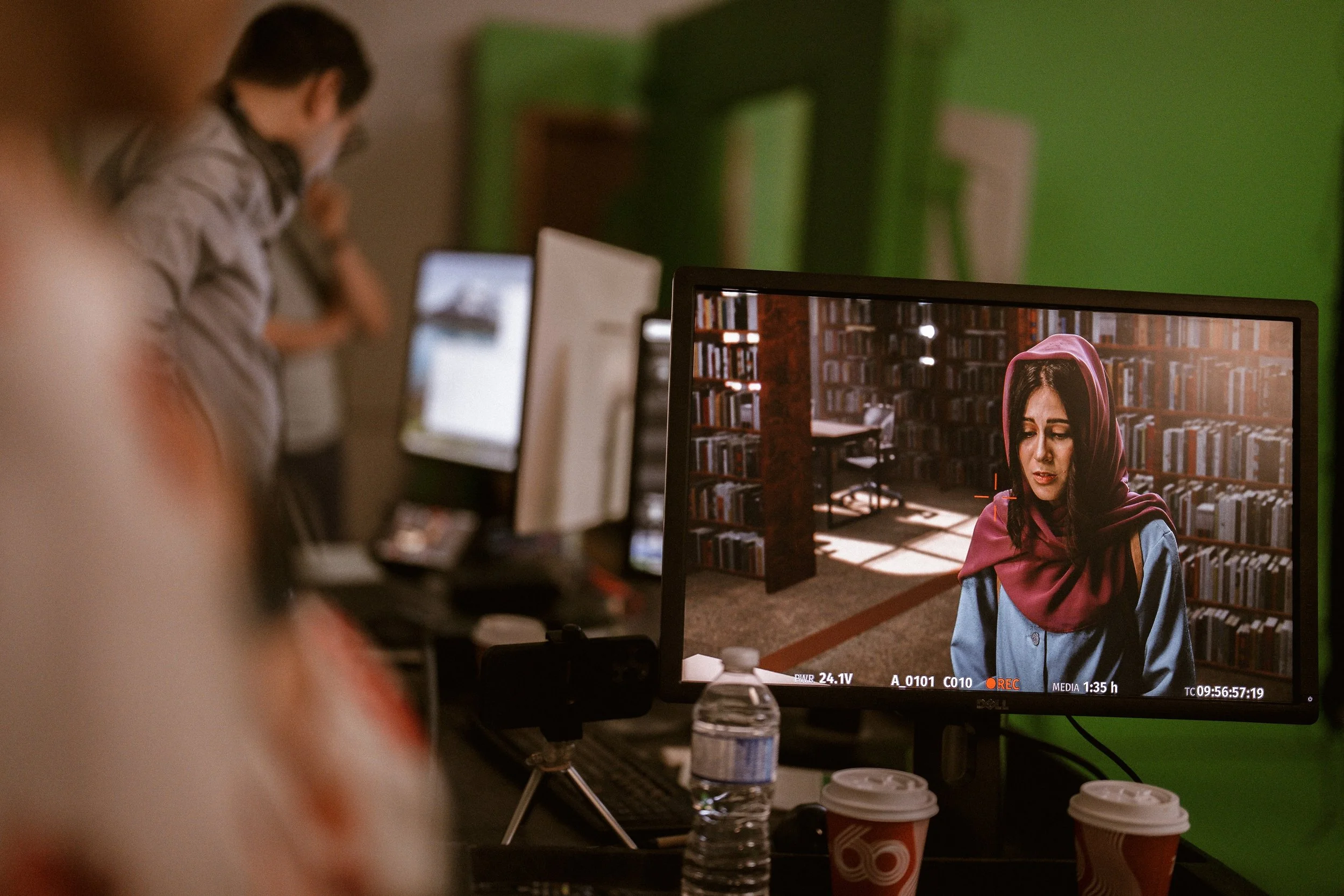Innovation in Visual Effects
When we set out to recreate in the 1990s and early 2000s in Tehran for our film, we knew traditional approaches wouldn’t be enough. Given the passage of time, the impossibility of filming on location, and the need to stay visually immersive, we developed a unique VFX pipeline that blended cutting-edge technology with creative artistry — all to serve the authenticity of our participants’ stories.
Our process started with real-time virtual camera technology, allowing us to previsualize entire scenes before shooting even began. We built both interior and exterior environments in 3D, scouted locations virtually with our director Nauzanin, and mapped out character movements using simple animation. This virtual scouting gave us a clear visual roadmap before we stepped on set.
To capture performances, we used a technique called SimulCam. On our green screen stage, the camera’s movements were precisely tracked and fed into the Unity engine, where the digital environments were rendered in real time. This meant our director of photography could see actors already placed inside fully realized locations — from a bustling bus station to a prison corridor — while operating the camera. It gave us flexibility, allowing us to adjust compositions, lighting, and set dressing right there on set, blending the virtual and physical worlds seamlessly.
Once filming wrapped, we refined these backgrounds to higher fidelity, ensuring every prop, texture, and light source matched our historical references. Our final visual step was a custom rotoscope-style treatment, inspired by our reference paintings. This multi-layered process isolated different parts of each shot, allowing us to apply expressive brushstroke textures to the environments while preserving the actors’ facial details. The result was a living, oil-painted aesthetic that evoked memory and emotion, rather than just replication.
In total, we created over 45 minutes of visual effects across more than 300 shots, bringing to life streets, airports, homes, and courtrooms that no longer exist as they once did. By embracing real-time tools and blending them with handcrafted artistry, we were able to transport audiences back 40 years and immerse them in stories that demanded to be told. This pioneering fusion of technology and storytelling wasn’t just a creative choice — it was a necessity and propelled us into innovation.




